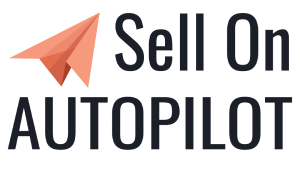What is the difference between an ideal customer profile and a buyer persona?
What is the difference between an ideal customer profile and a buyer persona? Read on to find out how these two valuable tools, differ, and how each is used to gain clarity around potential customers or clients of a business.
Access our free market research to understand your audience.
In this guide, we’ll take a look at:
One of the key differences between a business that makes it and those that don’t is understanding the target market and who the ideal customer is. To understand who your business is targeting, you need to do research. But it’s one thing to research and another to put the research results to good use in your business. These two tools help you do just that. But before we explore the ideal customer profile and a buyer persona, let’s get clear on what an ideal customer is first.

If you don’t research and define your ideal customer, your customer base won’t be ideal.”
Prue Madden
What is an ideal customer?
An ideal customer is someone likely to buy your product or service and become a repeat customer. They are also likely to spread the word about your business to their friends, family, and colleagues.
To identify your ideal customer, you need to consider what needs or problems your product or service can solve. It is best to consider your target market and what they are looking for. Once you understand your ideal customer, you can create a customer profile that includes all of the information you need to know about them.
How to identify your ideal customer
There are a few key things to look for when identifying your ideal customer. First, you want to identify the main problem that your product or service solves. Then, you want to look at the demographics of your current customer base. From there, you can start to profile your target customer.
Here are a few questions to ask yourself as you start to profile your ideal customer:
- What are the demographics?
- What are their pain points?
- What are their goals?
- What motivates them?
- What objections do they have to buying from me?
Once you have answered these questions, you can build out your ideal customer profile. This profile should include everything from their demographics to their psychographics. A well-defined ideal customer profile can better target your marketing efforts, resulting in more customers and sales.
Benefits of defining an Ideal Customer
There are many benefits of defining an ideal client profile for your business. Perhaps the most obvious is that it allows you to focus your marketing efforts on a specific target audience rather than trying to reach everyone with your message. By identifying your ideal clients, you can also develop more targeted and effective marketing materials, saving you time and money in the long run. Additionally, having a clear understanding of your ideal customers or clients can help you forge stronger relationships, leading to improved customer satisfaction and loyalty.
Identifying your ideal customer can seem daunting, but it’s essential to the success of your business. You can take a few key steps to target the right audience.
Methods for identifying your ideal customer
Competitor research
One way to find examples of ideal customers is to look at your competitors and see who they are selling to. By doing this research, you can understand the types of people who are most likely interested in your product or service. By studying your competitors, you can get a good idea of people buying similar products or services.
Customer surveys
Another way to identify your ideal customer is to survey your current customers to understand what characteristics they share in common. You can also ask them what factors influenced their purchase from you. If you have a customer list, you can survey your customers to learn more about their needs and preferences. This information can help you identify common characteristics among your ideal customers.
Consumer research
If you’re unsure who to target, consumer research can help by studying potential consumers and identifying their motivation, preferences, and purchase behaviour. With this information, you can develop a profile of the ideal customer and create marketing strategies that will resonate with them. There are various methods for conducting consumer research, and each falls under one of two categories; primary research or secondary research. Primary research is conducted firsthand by interviewing or surveying potential customers. Secondary research is gathered from published sources, such as reports, studies, surveys, and online information directly posted by consumers in discussion forums, blog post responses, and Facebook groups. Both methods have pros and cons, so choosing the approach that will provide the most helpful information for your business is essential.
How do I know if I’m targeting the right market?
There isn’t necessarily a single answer to this question, as it depends on the specifics of your business and products or services. However, there are a few things to keep in mind when targeting an audience:
Are they the right size?
The market you are targeting should be large enough to support your business but not too large or small. Too small and you won’t have enough potential customers; too large may be challenging to reach them all.
Are they the right type?
The people you target should be within reach geographically, demographically (age, income level, etc.), and psychographically (lifestyle, interests, etc.).
Do they have the money to spend?
Even if the market you are targeting is the right size and type, they may not be able to afford your products or services.
Consider their needs and wants
Your audience should be interested in what you have to offer, so it’s essential to research what they’re looking for and how your business can fill that need or want.
Ideal customer examples
There are a few different ways that you can go about finding examples of ideal customers. One way is to look at your current customer and see if any patterns emerge. For example, do you tend to attract customers who are mainly women? Or do you tend to attract customers in a specific age range? Another way to find examples of ideal customers is to look at your competitors and see who they are selling to. Doing this can give you insight into who might be interested in your product or service.
What is an ideal customer profile?
An ideal customer profile is a term used in B2B that refers to a detailed description of your business’s best target customer. It includes demographic information, such as age, gender, income, and location; Psychographic information, such as interests, lifestyle, and values; And behavioural information, such as purchasing history and online activity. An ideal customer profile can also include information about a customer’s pain points and how your product or service can help solve them.
Creating an ideal customer persona helps you focus your marketing efforts on the most likely customers to buy from you. It also helps you create messaging that resonates with these customers. When you know your ideal customer, you can create content, ads, and offers specifically designed to appeal to them.
Defining your ideal customer profile is essential to growing a profitable business. Knowing who your ideal customer is can attract more of them and better use your marketing budget.
To create an ideal customer profile, you’ll need to gather some basic information about them, which may include:
Company
This part of the ideal customer profile defines the type of businesses that are to be targeted:
- Industry: Note that an can have multiple names, and businesses can operate in multiple industries.
- Region: Can be general or specific, e.g. certain cities in certain counties.
Person
Role: The title of decision-makers or decision-influencers to be targeted:
Special requirements (optional)
You can define your criteria to narrow your search and customize outreach; however, here are some examples you may like to consider:
- Type of business or organization (e.g., out of all marketing agencies, you need only Facebook ads agencies)
- Technology or software used
- Size of the premises
- Years in business or a role
- Product/service offered
- Participation in a particular event
- Events in the business’s lifecycle or operations (e.g., mergers, acquisitions, venture capital fundraises, etc.)
- Trigger events in the professional life of a person (e.g., promotion, new job, new team)
- Client types
Your service
Do you have specific products or services relevant to this ideal customer?
Data points
Consider what contact information you need to conduct outreach to your prospects; The person’s name, email, phone number, company name, corporate website, address, and other identifying information.
Work smart
Ideal customer profile examples
Following is an example of a customer profile:
- Industry: Ecofriendly product manufacturing
- Region: USA
- Role: Owner, CEO, Buyer
- Number of Employees: 1-500
- Revenue: Less than 5 million per year
- Technology used: Solar, wind
- Similarities between best customers: They create innovative, groundbreaking products.
- Your service: Eco-friendly recycled plastics
- Data points needed: Company name, website, title, first name, last name, email, a LinkedIn profile of the decision-maker, blog link.
This example is a simplified demonstration of an ideal customer profile to clarify the difference between an ideal customer profile and a customer avatar or persona, which we will explore next.
What is a customer avatar or buyer persona?
Once you’ve identified your ideal customer, it’s essential to create a buyer persona (or multiple buyer personas). In marketing speak, this is also called a customer avatar. These terms are used interchangeably. A buyer persona is a fictional character that represents your desired customer. If you are in B2B, you may have multiple distinct types of buyers for an ideal customer profile, each of which requires its buyer persona. For example, a business CEO may require one buyer persona, and a financial controller may require another. Likewise, in B2C, you may have different market segments that you target, each of which requires the creation of a buyer persona so that you have clarity when speaking to them in your content.
Creating a buyer persona helps you focus your marketing efforts on the most likely customers to buy from you. It also helps you create messaging that resonates with these customers. When you know your ideal customer and have a specific buyer persona to target, you can create content, ads, and offers specifically designed to appeal to that specific type of customer.
While it’s essential to create an ideal customer profile and a buyer persona, in B2B, customer profiles are not necessary.
Access our free market research course to discover audiences and their problems and needs.
How do I create a buyer persona to represent my ideal customer?
To create a buyer persona, you’ll need to gather some basic information about them, which may include:
- Name
- Age
- Gender
- Location
- Occupation
- Income level
- Interests/hobbies
- Values/beliefs
Once you have this information, you can start painting a picture of your ideal customer and begin thinking about content that you can create to appeal to them.
Where are the buyer persona and ideal customer profile used in the sales process?
The ideal customer profile is a filter for lead generation at the beginning of your sales funnel. The buyer persona is used to make decisions about communication throughout the entire sales process, so you can tailor your messaging and create content that resonates with your ideal customer.
Quality
Efficiency
Reviewing and updating your customer profile and buyer persona over time
As your business grows and changes and your customer base evolves, so should your buyer persona. Periodically review your customer profile and buyer persona to make sure they are still accurate representations of your customers and that your content is still resonating with them.
What to do next after defining your customer profile and buyer persona
Now that you better understand your ideal customer and the content they are most likely to respond to, it’s time to start planning and creating content that will appeal to them. Start by thinking about the types of content you can create to help you reach and attract your target buyers into your conversion funnel. Content could include blog posts, e-books, infographics, social media posts, etc. Once you have a few pieces of content in mind, start brainstorming ideas for promoting them. What channels will work best for reaching your ideal audience? How can you get them interested in your content? Finally, track the results of your content marketing efforts to help you determine which pieces of content resonate with your customers and which ones need some tweaking.

Download our buyer persona template and ideal customer profile workbook now.
Conclusion
In conclusion, every business needs to understand its clearly. For B2B businesses, an is essential to clarify the types of businesses to be targeted during lead generation. After creating an , building a avatar, otherwise known as a , is essential. A helps you focus your efforts to understand who is most likely to buy from you and what messaging will resonate best. For B2C businesses, a isn’t necessary, but a is.
By taking the time to research customers and clearly define who you are targeting with your content efforts, you are far more prepared to create targeted content that will attract these ideal customers to your business.
Related Articles
Why Is Customer Segmentation Important and how to Use AI for Smarter Marketing
Understanding your audience is more critical than ever and how cutting-edge AI tools can help you achieve precise segmentation, tailored campaigns, and higher engagement rates.
Buyer Persona Examples and How to Use AI for Better Ideal Personas
The Power of Buyer Personas In the ever-evolving landscape of marketing, understanding your audience is crucial. One of the most effective ways to achieve this is through buyer personas. These semi-fictional representations of your ideal customers help tailor your...
Steps for creating a Content Marketing Strategy with AI, for Startups
Imagine having the ability to predict your customers' needs before they even know them, to deliver personalized content that feels tailor-made for each individual, and to automate your marketing efforts with unprecedented precision. This isn't science fiction; it's...

Follow Us
Join
Subscribe For Offers & Updates
Join the Sell On Autopilot emails list to be the first to know when we release new blog posts, products, and special offers.







